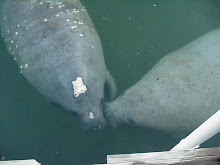The frequent visitors to this blog of mine will know that The Colonel and I volunteer for our county's historical center. Sometimes we get to dress up as we help with the center's programs. Today we helped with the last program for the kids' summer camps. Tomorrow the local children start a new school year. Where did the summer go?
The last program was entitled "The Language of the Fan". We taught the children about language of the fan and then they got to make one of their own.
"There's a language of the fan?"
You betcha and it is quite intricate. Ladies, cinch your corsets and gentlemen, straighten your cravats and let's learn a new language.
A little history lesson, of course (I know one of the reasons you visit my blog is to learn something new while having fun...right?) ...
The 18th century was the zenith of the fan. It was an essential accessory in a stuffy, crowded ballroom. Fans were constructed out of many things: ivory, silk, paper, lace to name a few. There were fans for all occasions and they were one of the earliest forms of tourist souvenirs, painted or printed with beautiful landscapes and current interests.
No matter how fashionable a lady's fan, she would not be considered elegant unless she held it in the correct way. Young ladies were instructed as to the proper ways to handle their fans.
18th century ladies used their fan for more than staying cool in those stuffy ballrooms. They used it as a form of expression. The fan became a part of the lady's body language. Ladies used this "Language of the Fan" to communicate messages across the room without saying a word.
(My best "Lady's" costume I could put together from my closet and the Historical Center's costume closet...I would have stirred up quite the scandal back in the day, as I did not have a corset under my costume!)
To learn and use the fan language, it was vital to know your right from your left.
Touching right cheek - yes
Touching left cheek - no
Twirling in right hand - I love another
Twirling in left hand - we are being watched
Placing on left ear - I wish to be rid of you
There are roughly 32 movements to the language of the fan (that I am aware of ) but I will not list them all. Here are a few I find interesting.
A closed fan touching the right eye - When may I be allowed to see you?
A half-opened fan pressed to the lips - You may kiss me.
Drawing the fan across the eyes - I am sorry.
Fanning slowly - I am married.
Fanning rapidly - I am engaged.
Drawing the fan across the forehead - You have changed.
Drawing the fan across the cheek - I love you!
Drawing the fan through the hand - I hate you!
Hands clasped together holding the fan open - Forgive me.
Fan in right hand in front of face - Follow me.
Fan in left hand in front of face - I am desirous of your acquaintance.
My goodness, if I had been living during the height of language of the fan, I just might have made a few faux pas while in a stuffy, crowed ballroom and ended up in a very unladylike situation with a dishonorable rake (especially while not wearing a corset)!
After we gave the children a little lesson on the fan's language (I demonstrated the movements as someone else spoke about them) we helped them to make a fan of their own. They would use paper, ribbon, Popsicle sticks and glue.
They accordion folded the colored piece of paper, as well as the paper with an alligator on it, and then glued the pieces together. We punched holes at the base of their fans and helped the kids tie the ribbons on. We also helped them glue the sticks to their fans.
This is the fan I made while showing the kids how to make theirs.
These little handmade fans are the perfect size for the kids to carry in their backpacks as they begin a new school year during one of the hottest months here in Florida.














































































